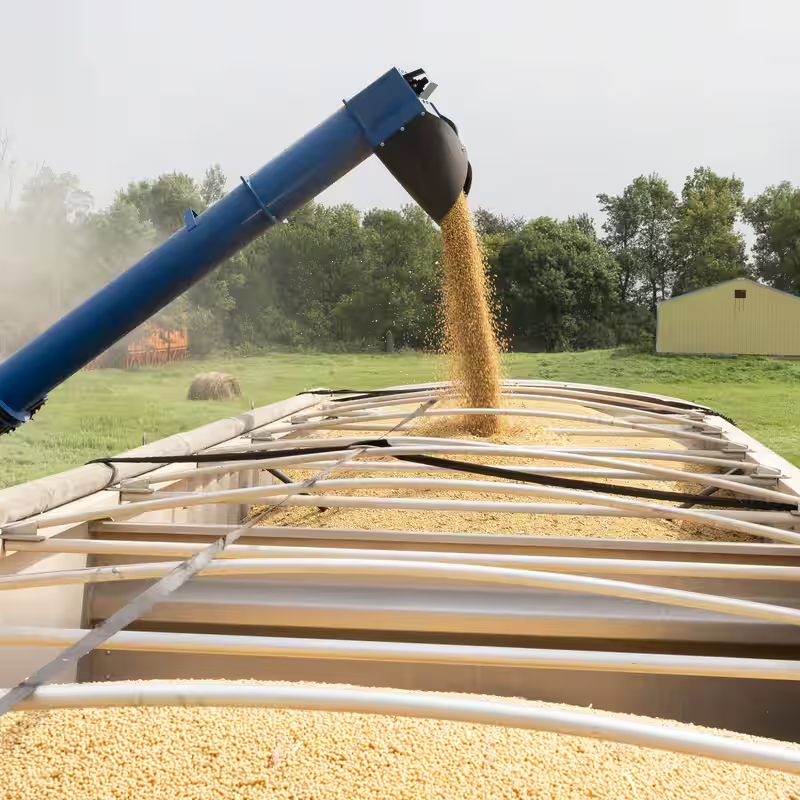American soybean farmers are breathing a sigh of relief after a high-stakes trade truce between the U.S. and China promises to reopen one of their most critical export markets. After months of uncertainty and financial strain, President Trump announced that China has agreed to resume purchasing “massive amounts” of U.S. soybeans, sorghum, and other agricultural goods .
Soybean Farmers on the Brink—Until Now
For much of 2025, rural America has been gripped by anxiety. Following the reimposition of steep tariffs by the Trump administration, China—the largest buyer of U.S. soybeans by value—halted its purchases almost entirely, shifting its sourcing to Brazil instead. The sudden loss of this key market sent soybean prices plummeting, with many farmers receiving offers below $10 per bushel—roughly $2 short of their break-even point .
“The fear was real,” said Bill Wilson, professor of agribusiness at North Dakota State University. “Many were bracing for a repeat of the 1980s farm crisis.”
What’s in the New U.S.-China Trade Deal?
While the full terms remain under wraps, Treasury Secretary Scott Bessent revealed key purchase targets during a Fox Business appearance:
- 12 million metric tons of U.S. soybeans to be bought between October 2025 and January 2026
- At least 25 million metric tons annually for the next three years (2026–2028)
That totals 87 million metric tons over four years—a significant commitment, though notably less ambitious than the 142 million tons pledged in the 2020 Phase One deal .
Financial Impact: Promising, But Cautious Optimism
According to economic research firm Veda Partners, China’s new four-year soybean commitment is valued at approximately $34.2 billion at current prices—well below the $56.4 billion envisioned in the earlier agreement .
“Soybean markets and farmers are finding the deal ‘underwhelming,’” said Henrietta Treyz, Veda’s director of economic policy. “It lacks permanence and detailed timing, which creates uncertainty.”
| U.S.-China Soybean Deal Comparison | 2020 Phase One Deal | 2025 Truce |
|---|---|---|
| Total Soybeans Committed | 142 million metric tons | 87 million metric tons |
| Time Frame | 2 years | 4 years |
| Estimated Value | $56.4 billion | $34.2 billion |
| Actual Fulfillment (Historical) | ~83% (per Peterson Institute) | Not yet determined |
Market Reaction and Farmer Sentiment
Grain markets responded modestly. Soybean futures ticked up from $10.92 to $11.06 per bushel—a 1% gain—following Bessent’s announcement . But many local grain elevators remain cautious, holding purchase offers steady near $10, waiting for confirmed Chinese orders before raising bids.
Still, industry leaders welcomed the news. “This is a meaningful step forward to re-establishing a stable, long-term trading relationship,” said Caleb Ragland, president of the American Soybean Association .
A One-Year Ceasefire—What Comes Next?
Critically, the agreement is framed as a one-year trade truce. That raises questions about whether the soybean purchase commitments will automatically extend or require renegotiation in 2026. Additionally, it remains unclear if China will resume large-scale imports of other U.S. farm goods like cotton, nuts, or pork under this framework.
Treasury Secretary Bessent, himself a North Dakota soybean grower, expressed confidence that more deals are coming—not just from China, but from Southeast Asian nations pledging an additional 19 million metric tons in purchases (though no timeline was given) .
For now, America’s soybean belt is allowing itself a moment of cautious hope. As one Iowa farmer put it: “It’s not a full recovery—but it’s a lifeline we desperately needed.”
Sources
- The New York Times: Soybean Farmers Find Relief in U.S. Trade Truce With China
- Peterson Institute for International Economics – U.S.-China Trade Compliance Reports
- Veda Partners Economic Analysis, October 2025




